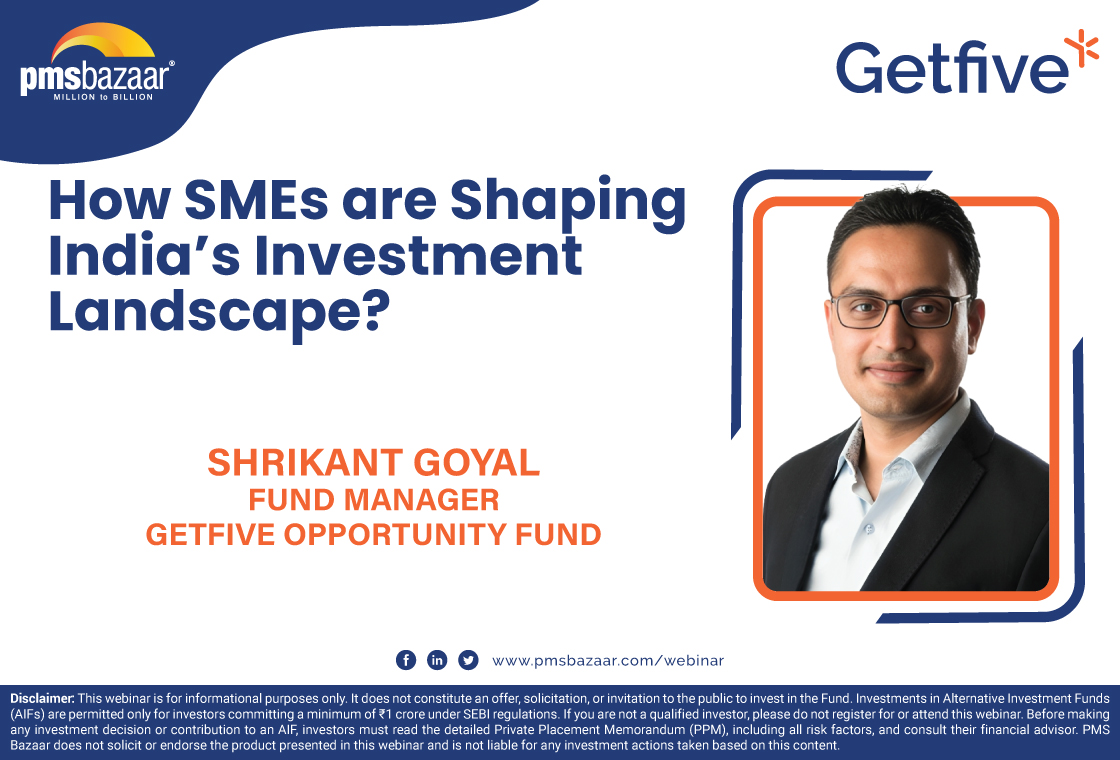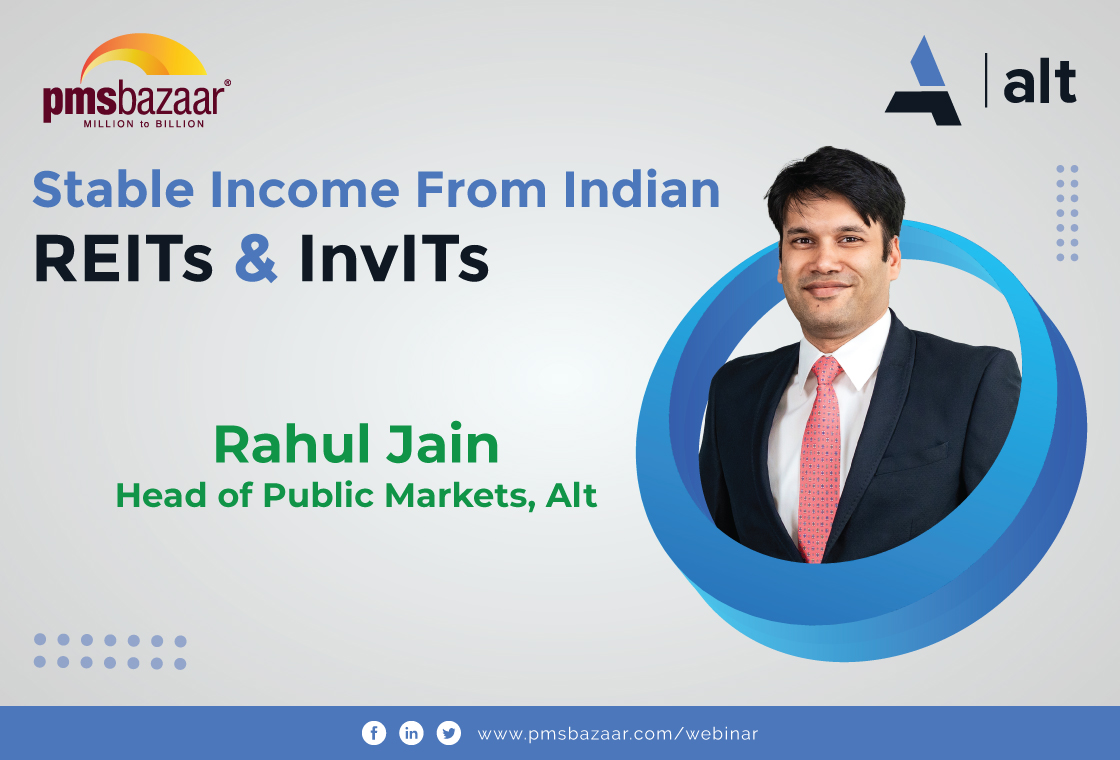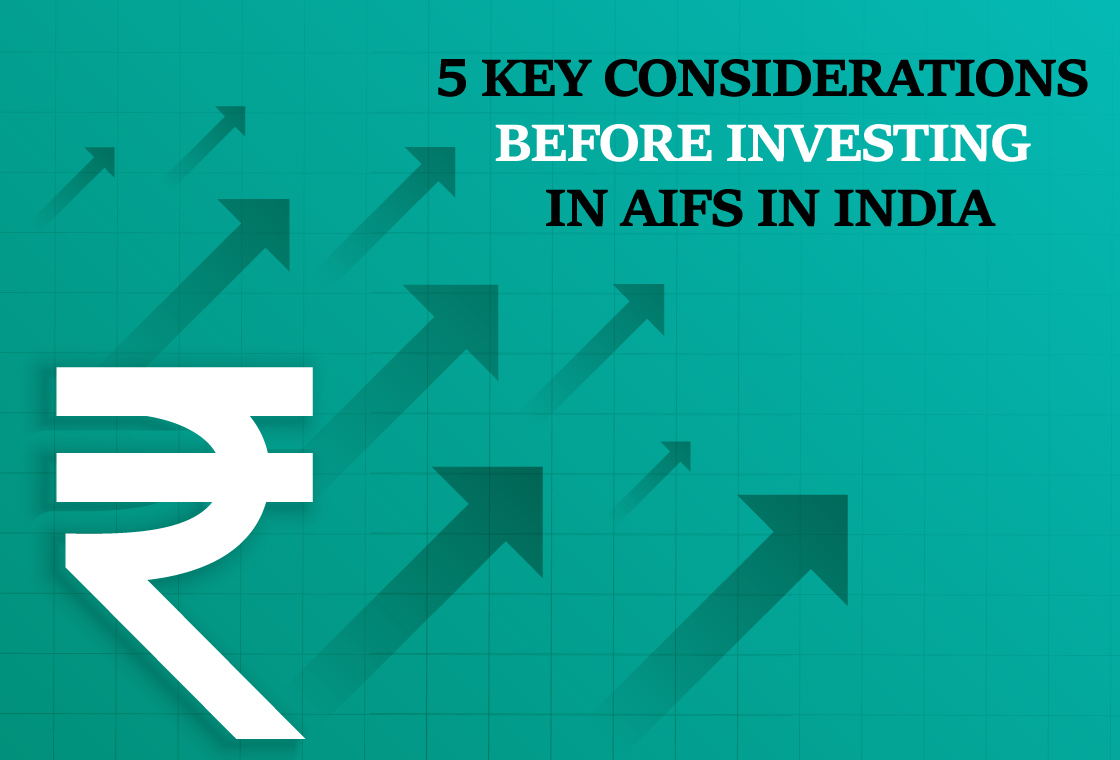PMS Bazaar recently organized a webinar titled “Mid and Small Caps: Driving India’s $5 Trillion Pathway,” which featured Mr. Achin Goel, Fund Manager at Bonanza.

The webinar blog covers insights from Mr. Goel, which include India’s economic vision, small and mid-cap investment potential, market trends, sectoral focus (EVs, defence, infrastructure), Bonanza’s investment strategy and risk management, startup ecosystem, portfolio discipline, exit strategies, valuation approach, structural market shifts, SIP growth, digitalisation, and performance metrics like CAGR, churn ratio, and AUM growth across multi-cap and mid-cap segments.
Key aspects covered in this webinar blog are
- The vision of a transformed India
- Small and mid-caps: Drivers of future growth
- Understanding market trends and projections
- Tackling risk and market fragmentation
- Power of startups and government initiatives
- Strategic sector focus & Bonanza's portfolio management strategy
- The importance of discipline and exit strategies
- Bonanza’s strategy and edge performance
- Structural shifts in capital markets & Validating investment conviction
- Valuation approach and small-cap strategy
- Capital goods focus and research methodology
- Performance, growth and churn management
The Vision of a Transformed India
Mr. Goel opened his session with a compelling vision an India led by electric vehicles, exporting semiconductor chips and defence warheads. He noted that while this may sound overly ambitious today, it is precisely such bold possibilities that shape their investment approach in the small-cap and mid-cap space. For Bonanza, the focus lies in conviction led investing, not short term comfort.
With India now a $4.2 trillion economy on the brink of reaching $5 trillion, Mr. Goel highlighted how visionary thinking can become a financial reality with time, innovation, and strategic foresight.
Small and Mid-Caps: Drivers of Future Growth
Mr. Goel posed a critical question who will drive India’s growth to the $7 trillion mark? Large corporations, or the fast-moving, agile small and mid-cap companies? He made a strong case for the latter, arguing that these companies often respond quicker to new challenges and economic demands.
He referred to disruptors like Zomato and Swiggy, which redefined convenience and created entirely new industries. According to Mr. Goel, many companies that are now giants including Infosys and Bajaj Finance, once belonged to the small-cap category. He asserted that this space continues to generate innovative solutions and is pivotal for India’s economic acceleration, especially in Tier 2 and Tier 3 cities.
Understanding Market Trends and Projections
Sharing data, Mr. Goel explained that small and mid-cap companies currently contribute around 38% to India’s total market capitalisation, which is approximately $1.9 trillion. By 2027, with a projected GDP of $5.2 trillion and a market cap to GDP ratio of 1.2, this contribution is expected to rise to $2.55 trillion—reflecting a 16% growth.
He underlined that this growth isn't a random spike but part of a broader trend. In the early 2000s, the segment’s contribution stood at 17–18%. It now averages around 38%, with expectations of a further 2–3% increase in the next few years.
With five-year returns close to 35% and historical CAGR returns of 15–21%, he argued that this segment consistently outperforms, especially when the portfolio is actively managed.
Tackling Risk and Market Fragmentation
While acknowledging the risks—like credit bottlenecks and startup failures, Mr. Goel explained that tools such as Alternate Investment Funds (AIFs) are rapidly enabling credit growth. He acknowledged market fragmentation as a persistent issue, particularly during the 2021–22 correction when many startups were wiped out. Yet, he maintained that resilience and strategic investment could overcome these hurdles.
He also highlighted the importance of disciplined behaviour in volatile markets. At Bonanza, they respond by adjusting their cash positions tactically reducing exposure during downturns and re-entering during recovery.
Power of Startups and Government Initiatives
Mr. Goel showed enthusiasm for India’s expanding startup landscape. With over 1 lakh registered startups tackling close to 10,000 unique problems, the ecosystem plays a vital role in economic progress. He celebrated India’s 100+ unicorns, valued at over $350 billion, and mentioned supportive government schemes like PLI, Atmanirbhar Bharat, and Startup India.
He pointed out that these policy frameworks, combined with innovation on the ground, create a fertile ground for the mid and small-cap segments to flourish. He insisted that this dynamic will be instrumental in reshaping India's economic future.
Strategic Sector Focus
Mr. Goel listed five sectors that Bonanza currently finds promising: Renewable Energy, Electric Vehicles, Infrastructure, Railways and Defence. These sectors are experiencing significant momentum and are closely aligned with India’s development goals.
In the defence sector, he spoke about Hindustan Aeronautics (HAL) and especially Cochin Shipyard. With a 5x order book and new shipyard plans in Tamil Nadu, Cochin Shipyard stands out for its revenue visibility and high-margin ship repair segment.
For Infrastructure, he highlighted KEC International, which is transitioning from power transmission to a more diversified model, now drawing nearly half its revenue from civil works, railways, and pipelines across 110 countries.
Bonanza's Portfolio Management Strategy
Mr. Goel shared insights into Bonanza’s portfolio strategy, aiming for 25–35% CAGR returns. While stock selection accounts for 40% of returns, timing when to buy, how much, and when to exit plays a greater role. Their approach involves continuous revalidation of investment thesis.
Bonanza's stock selection relies on both top-down and bottom-up analysis. It includes evaluation of fund flows, fundamentals, and a proprietary algo screener. This 5F and 1T model analyses Quality, Holding, Growth, Valuation, Technical, and Financial strength scored out of 30. If a stock’s score drops, it prompts deeper investigation.
He mentioned stocks like HAL, Wockhardt, Manappuram Finance, and Data Patterns as successful examples. Bonanza’s agility in booking losses also plays a critical role.
The Importance of Discipline and Exit Strategies
Mr. Goel emphasised that while exit strategies may vary, discipline remains the backbone of portfolio success. He explained that every process at Bonanza is thoroughly tested, implemented, and followed with precision.
Citing Doms Industries as an example, he illustrated their decision to exit despite the company’s strong growth potential. Having entered the stock, Bonanza chose to exit after the stock showed no progress for six months. Instead of dwelling on a 30% drop, they treated it as an opportunity to reallocate capital for better prospects. Mr. Goel reiterated that exit strategies often outweigh entry decisions.
Bonanza’s Strategy and Edge Performance
Mr. Goel detailed how Bonanza’s product management includes data screening, algorithmic inputs, and human insight. He discussed the “Edge” strategy, aimed at uncovering multi-bagger opportunities that may take time to mature. For instance, Bonanza held positions in the power and infrastructure sectors for over a year, with a 60% rise materialising only recently.
He highlighted the consistency behind a 40% CAGR over five years, while clarifying that historical performance doesn’t guarantee future results.
Structural Shifts in Capital Markets & Validating Investment Conviction
Responding to a query, Mr. Goel highlighted two key structural shifts in Indian capital markets: rising retail participation and digitalisation. Demat accounts, he noted, have jumped from around 5 crore in 2020 to nearly 19 crore today. This retail boom is reshaping market behaviour.
He added that SIP flows have also grown substantially from ₹7,000-8,000 crore five years ago to ₹26,500 crore in May 2025. This massive inflow, he said, reflects deeper investor engagement, boosted by digital adoption and government focus on Capex.
Discussing Manappuram Finance, Mr. Goel mentioned Bonanza’s early investment in November 2024, based on confidence in the gold financing sector. Bain Capital’s recent ₹4,000 crore investment for an 18% stake validated Bonanza’s thesis.
Valuation Approach and Small-Cap Strategy
Challenging conventional valuation measures, Mr. Goel said high P/E ratios don't deter them if the company shows strong potential. In small and mid-caps, he’s comfortable with P/E ratios up to 80, whereas for large caps, he prefers 30 to 40. The emphasis he said, is on growth sustainability and innovation, not just numbers. He reiterated that Bonanza’s stop-loss and exit rules act as risk management tools, enabling them to stay invested while remaining agile.
Capital Goods Focus and Research Methodology
Bonanza’s capital goods allocations are driven by a top-down view. Mr. Goel named companies like ABB and Premier Energies as examples. The sector, vital for a “Viksit Bharat,” is expected to perform well for the next few years. Their “Edge” strategy uses fundamentals for selection, with technicals reserved for timing entries and exits. Active strategies use technical tools more heavily to manage higher volatility and ensure minimal drawdowns.
Performance, Growth and Churn Management
Addressing audience concerns, Mr. Goel clarified that while short-term underperformance happens, strategies consistently outperform over one to five year periods.
Bonanza’s five-year CAGR is 40% in multi-cap and 22% in large and mid-cap portfolios. He encouraged comparison via portals like PMS Bazaar. On AUM, Mr. Goel noted they only began external investor outreach in 2021-22, growing from ₹50 crore to ₹250 crore, aiming for ₹1,000 crore soon.
Churn ratio in “Edge” remains low at 1.5 to 2.5, while actively managed variants may go up to 3. He concluded that churn is always strategy driven and not random.
Mr. Goel covered all the topics mentioned above in-depth and answered questions from the audience toward the end of the session. For more such insights on this webinar, watch the recording of this insightful session through the appended link below.
Get access to rich data and analytics of PMS & AIF by subscribing to us. Join the 75000+ investors & experts: Subscribe NOW
Disclaimer: The information about funds, investment strategies, stocks, and sectors is for informational purposes only and doesn't constitute investment advice or Recommendation. PMS Bazaar and the AMC do not endorse or recommend any specific investment or stocks. Past performance is not indicative of future results. The returns mentioned are not verified by SEBI. Please consult with a qualified financial advisor before making any investment decisions.
Recent Blogs

Long-Only AIFs Rebound Sharply in October; Long-Short Strategies Lag Despite Lower Volatility
106 long-only AIFs averaged 3.68% vs 32 long-short AIFs at 2.7%; only 24–31% of funds beat key indices

Markets log strongest monthly gains in 7 months; PMS performance turns near-uniform in October
Nifty 50 TRI gained 4.62%, BSE 500 TRI rose 4.27%; 415 of 427 equity PMSes ended positive

How SMEs are Shaping India’s Investment Landscape?
PMS Bazaar recently organized a webinar titled “How SMEs are Shaping India’s Investment Landscape?” which featured Mr. Shrikant Goyal, Fund Manager, GetFive Opportunity Fund.

Stable Income from Indian REITs and InvITs
PMS Bazaar recently organized a webinar titled “Stable Income from Indian REITs and InvITs,” which featured Mr. Rahul Jain, Head of Public Markets, Alt.

5 Key Considerations Before Investing in AIFs in India
Alternative Investment Funds (AIFs) have emerged as a compelling option for sophisticated investors seeking diversification and potentially superior returns. But venturing into AIFs requires a clear understanding of their unique characteristics that go beyond simply knowing what they are and their categories.

How AIF can help in diversification?
Traditionally, Indian investors have relied on a mix of stocks and bonds to build their wealth. While this approach offers diversification, it can still leave your portfolio vulnerable to market fluctuations. Enter Alternative Investment Funds (AIFs), a dynamic asset class gaining traction for its ability to unlock diversification beyond the realm of conventional options.

Long-Short AIFs Outperform Again Even as Markets Rebound in September
104 long-only funds shows an average monthly gain of just 0.37 per cent, while long-short AIF category averaged 0.94 per cent

Resilience returns as markets rebound in September; Multi-asset PMSes lead pack
Over 63% of equity PMSes ended September in green; nearly two-thirds outperformed key benchmarks.

